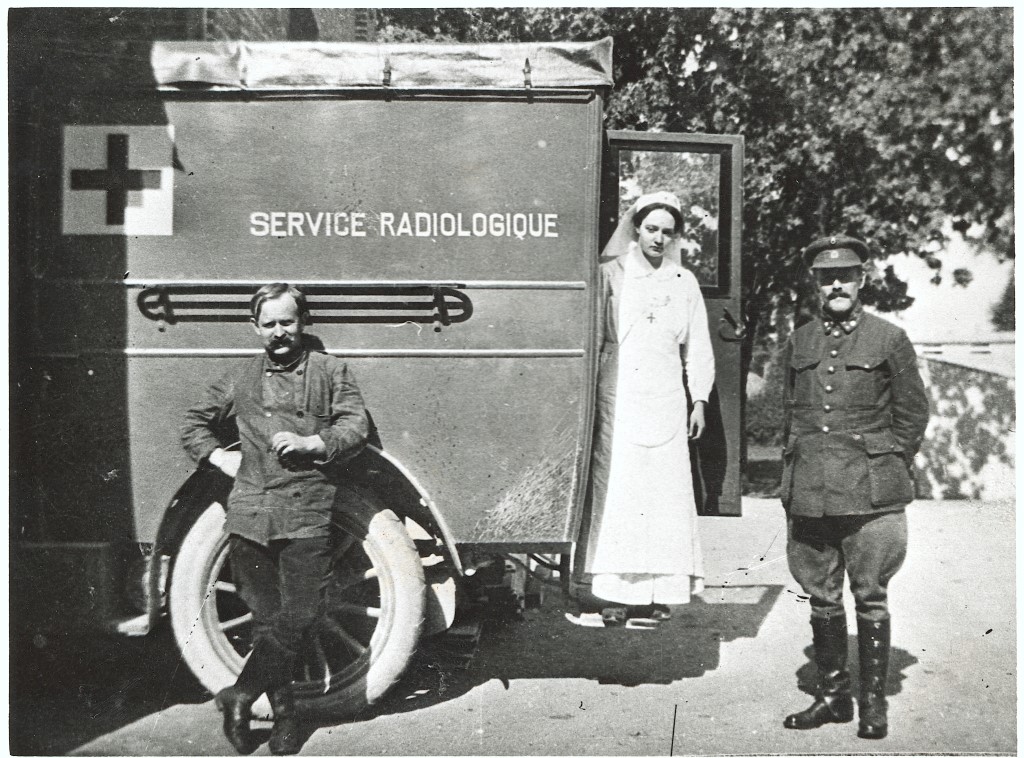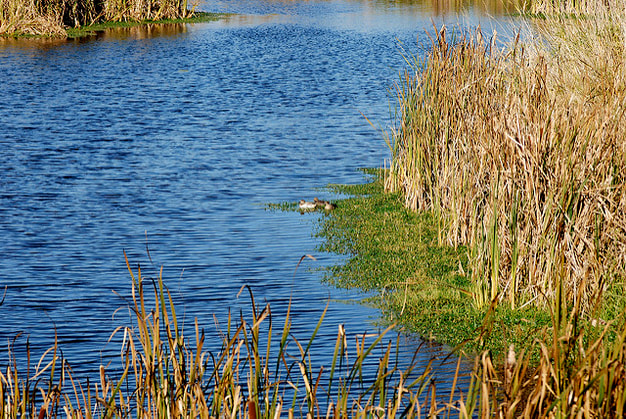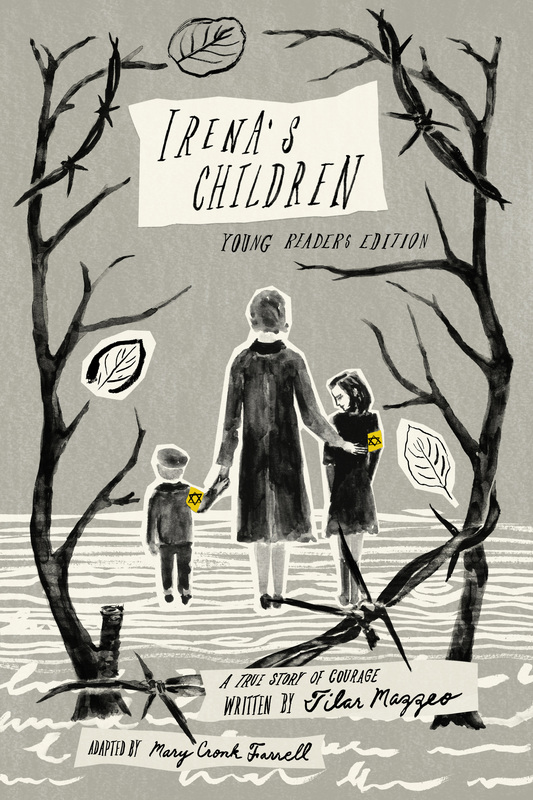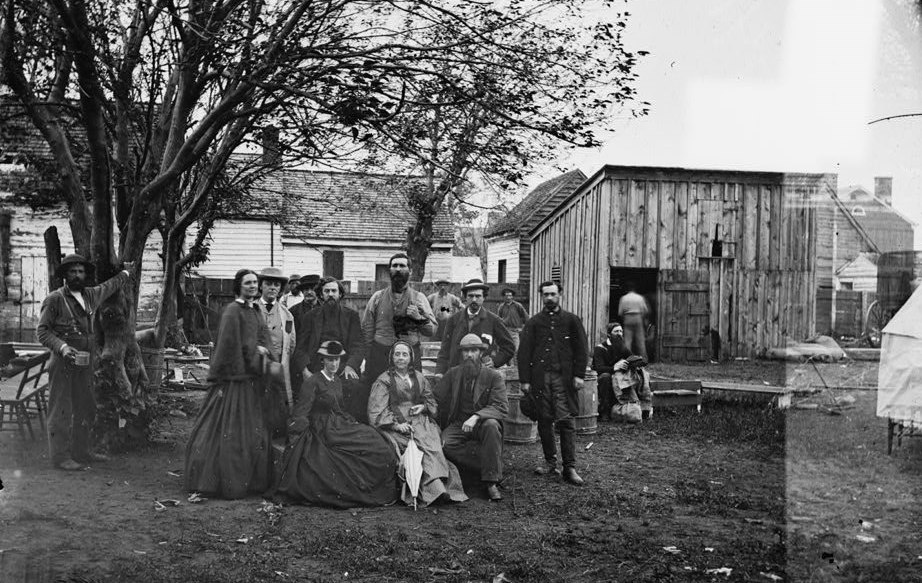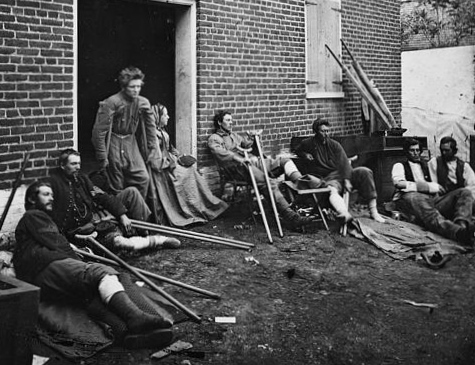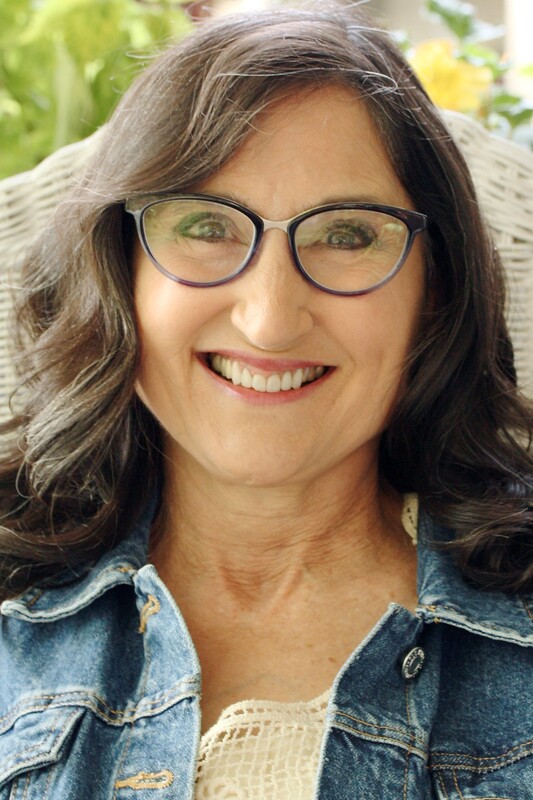|
Two Women Revolutionized Science and Changed the World. Irene Curie--not Marie Curie, the Nobel-Prize-winning scientist you've heard about, but her teenage daughter. The story takes one twist after another, and here to tell it is Winifred Conklin author of the new book Radioactive! Seventeen-year-old Irene Curie volunteered to serve in World War I as an x-ray technician. She used portable x-rays to help surgeons identify shrapnel and perform operations near the battlefield. Below Irene Curie on a mobile x-ray unit in 1916. Her mother had developed the military x-ray program. Marie wanted to win her mother’s respect, and, frankly, she wanted to spend some time with her mom. This combination of brilliant scientist and vulnerable teen made her an irresistible subject to me. 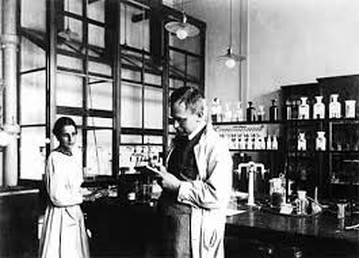 Lise Meitner in the laboratory (1913). Lise Meitner in the laboratory (1913). The Germans were using x-ray technology, too. Lise Meitner, an Austrian who had been working in Berlin when the war began, performed the same work as Irene. She was an x-ray technician on the German side of WWI. Both Curie and Meitner would prove to be among the most accomplished female scientists of the 20th century. These women were among a handful of physicists worldwide who were working on better understanding atomic structure. 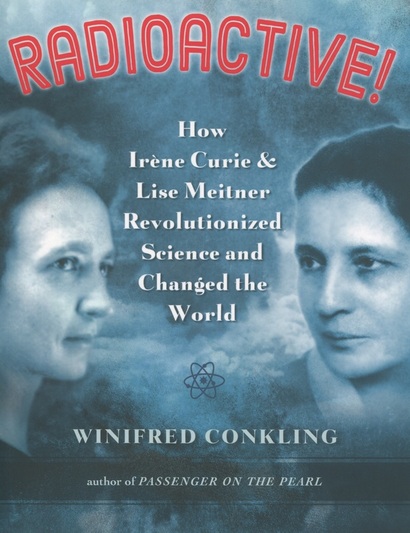 Curie had been born into the “First Family of Science” (both of her parents had won Nobel Prizes), But Meitner had been turned away from higher education programs because she was a woman. She finally had a chance to study physics at the University of Vienna in 1901, but she repeatedly came up against obstacles. She was not paid in the early years of her research program, and she had to set up her own laboratory in the basement of the science building because she was not allowed to work in the main lab with the men. The chief scientist claimed he was afraid her hair would catch fire, even though she wore her hair in a tight bun and the men in the lab almost universally wore elaborate facial hair. 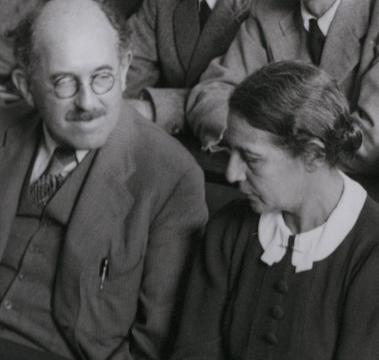 Otto Stern and Lise Meitner, possibly 1937 colloquy with Nobel Price winners Otto Stern and Lise Meitner, possibly 1937 colloquy with Nobel Price winners During their careers, both Irene and Lise made important discoveries in the understanding of physics. Curie and her husband, Frederic Joliot, discovered artificial radiation. They won a Nobel Prize in 1934 for their work. Lise had to flee Nazi Germany in 1938, leaving her laboratory and research behind. She continued to consult with her former lab partner, Otto Hahn, and she made the breakthrough in understanding of nuclear fission. Ultimately, Hahn took credit for her discovery and claimed the Nobel Prize for the work they did together. Lise Meitner and Otto Hahn in West Germany in 1962. 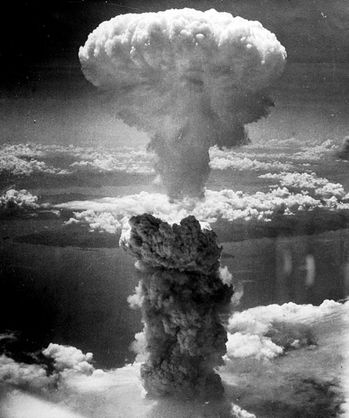 Bombing of Nagasaki, Japan Bombing of Nagasaki, Japan The women had seen such horrors on the battlefields during World War I that they had become pacifists; both were horrified that the work they did in the name of science had been used for the creation of the most destructive weapon in the history. “It is an unfortunate accident that this discovery (of fission) came about in a time of war,” Meitner said. I find these women inspiring not only because of their accomplishments, but also because of their humanity.  They were undeniably gifted scientists, but they also held fast to their love of peace. Curie dedicated her later years to working for nuclear disarmament; Meitner worked on the development of nuclear energy. Throughout their lives, they both envisioned a world where scientists could master the art of using the power of the atom not for a weapon but for the benefit of humankind. Winifred, thrilled to have you on the blog today, and to highlight your wonderful book. Thank you! Winifred Conkling is an award-winning author of fiction and nonfiction for young readers whose works include Passenger on the Pearl: The True Story of Emily Edmonson’s Flight from Slavery (Algonquin, 2015) and the middle-grade novel Sylvia and Aki, winner of the Jane Addams Children’s Literature Award and the Tomás Rivera Award. See more about Winifred's books here. Billy Frank Jr. grew up on the Nisqually river in Western Washington, becoming an expert fisherman as a youngster. He knew every current of the river and every creature that made its home in the delta. The Medicine Creek Treaty of 1854 had guaranteed Billy's Nisqually and other native tribes in the region the right to fish in their "usual and accustomed places. But at age 14, Billy was arrested by state fish and game wardens as he cleaned the steelhead he'd netted for his family's supper. 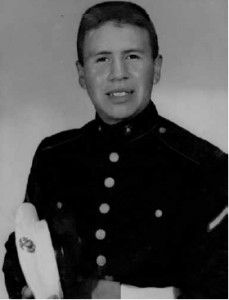 Billy knew then he’d have to fight for his right to fish, for his the culture and his heritage. But that would wait until he served his country as a U.S. Marine during the Korean War. When he returned, things hadn't changed. His boats and nets were confiscated, he lived like an outlaw, fishing at night, always on the lookout for men in uniforms. He was "chased and tear-gassed, tackled, punched, pushed face-first into the mud, handcuffed and dragged soaking wet to the country jail." 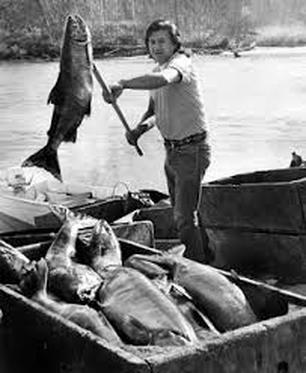 Billy Frank Jr., photo courtesy of the NW Indian Fisheries Commission. Billy Frank Jr., photo courtesy of the NW Indian Fisheries Commission. Billy Frank Jr. was arrested 50 times fishing on the Nisqually River over next thirty years. He spearheaded a long-term civil disobedience movement aimed at restorying Northwest Coast Salish treaty rights. There would be protests at the state Capitol, a full-scale riot on the banks of the Puyallup River in 1970, myriad lawsuits and finally a U.S. Supreme Court ruling in 1979 before the so-called 'fish wars' in Washington were resolved. Following that victory, Billy Frank Jr. led conservation efforts to restore and protect Puget Sound, worked to unite local tribes and became a national voice for Indian Country. 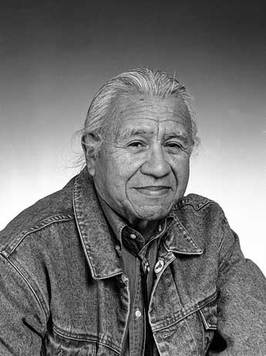 After his death in 2014, President Obama posthumously awarded Frank, Jr. the Presidential Medal of Freedom, the highest honor that can be given a US civilian. “He saved the salmon that had fed his family for generations,” President Obama said. “He was spat on, shot at, chased, clubbed and cast as an outlaw, but Billy kept fighting because he knew he was right.” This is a man of courage and perseverance, instrumental in creating more justice for Native tribes. His story should be a book for kids, written by a Native American. Maybe I could be a mentor, helping with writing and knowledge of the publishing business? His words nee to be heard now, more than ever. “I don’t believe in magic. I believe in the sun and the stars, the water, the tides, the floods, the owls, the hawks flying, the river running, the wind talking. They’re measurements. They tell us how healthy things are. How healthy we are. Because we and they are the same. That’s what I believe in.” A new school curriculum on tribal treaty fishing rights and salmon conservation has been developed for free download and use by teachers. The lessons are intended to supplement history and science classes, middle through high school and include videos and historical photos. Coming in September! The "Female Oskar Schindler"
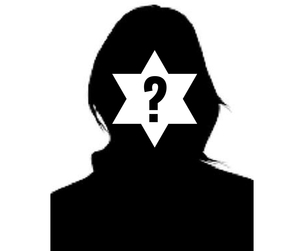 Imagine a women who risks her life to save a child. Imagine a woman who risks her life every day for 4-years to save children. Imagine a woman who's tortured and condemned to death for saving the lives of children. My new book is about this woman! Cover reveal coming next Friday! Go ahead, take a guess! Who is the subject of this biograghy? 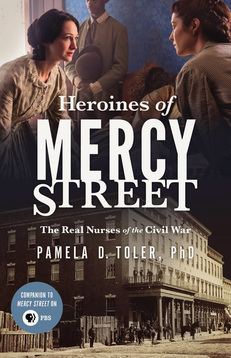
Pamela D. Toler, author of a new book about the agreed to talk to me about the book, and right off, I told her I tend to be queasy. She assured me the book touches lightly on the blood and gore of battle wounds, and focuses on the doggedness of the women nurses. Doggedness they sorely needed because the doctors didn't want their help. Pamela says ""Just getting to the hospital or battlefield required these women to push against societies assumptions about what ladies should and should not do. Georgeanna Woolsey was a New York socialite who took all the trimming off one of her dresses and a bonnet, dressed her hair as plainly as possible and, to the amazement of her family, bluffed her way into a slot in the nurses training program." 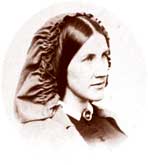
Georgeanna Woolsey wrote, "No one knows who did not watch the thing from the beginning, how much opposition, how much ill-will, how much unfeeling want of thought, these women nurses endured. Hardly a surgeon whom I can think of received or treated them with even common courtesy. Government had decided that women should be employed, and the Army surgeons - unable therefore to close the hospitals against them - determined to make their lives so unbearable that they should be forced in self-defense to leave."
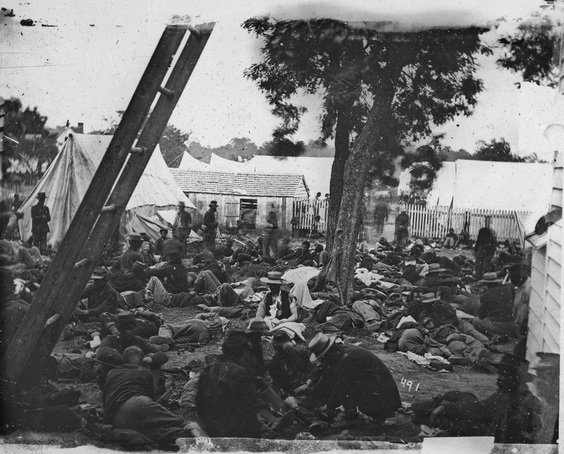
Savage Station, Virginia. Union field hospital after the battle of June 27 Includes the straw-hatted Sixteenth New York Infantry who fought at Gaines' Mill on June 27. Most were captured when Confederates overtook the area during the battle of Savage's Station on June 29 during the Peninsular Campaign. Library of Congress
Pamela says the nurses "learned to cope with the sights and smells of a military hospital—dysentery and amputations were both ugly things. Some women didn't last. And I can't blame them. 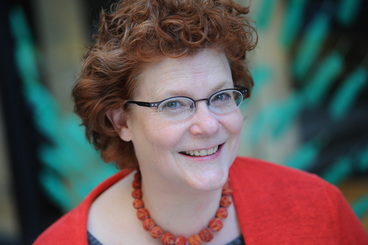 Author Pamela D. Toler Author Pamela D. Toler
Even filtered through nineteenth century gentility, the first hand accounts of Civil War hospitals are pretty grim. But many women gathered up their courage and learned not only to bandage wounds but to elbow their way through a hostile bureaucracy. They came out of the war with new skills and new confidence.
And after the war many of them used their new skills at organizing and working within male-dominated bureaucracies to make the world around them a better place. "Many people, including me," says Pamela, "are intrigued by the stories of the women who disguised themselves as men to fight in the Civil War. They were colorful and heroic, but their choices didn't change anything. "I would argue that the women who served as nurses and their counterparts who ran the soldiers' aid societies that provided soldiers with basic necessities throughout the war had a profound impact on the status of women after the war. If you look at an American reform movement after 1865, the odds are you'll find a former Civil War nurse in the middle of things." Pamela says the message she has taken from these Civil War nurses is that the first step to changing the world is challenging yourself. Sometimes I think I get enough challenge just waking up in the morning, but these women went out and grabbed trouble by the horns and hung on. For women of their time, they were downright amazing! What's an amazing woman for our time look like? I'd love to hear your thoughts on that. |
I'm fascinated to discover little-known history, stories of people and events that provide a new perspective on why and how things happened, new voices that haven't been heard, insight into how the past brought us here today, and how it might guide us to a better future.
I also post here about my books and feature other authors and their books on compelling and important historical topics. Occasionally, I share what makes me happy, pictures of my garden, recipes I've made, events I've attended, people I've met. I'm always happy to hear from readers in the blog comments, by email or social media. Archives
September 2023
Categories
All
|
